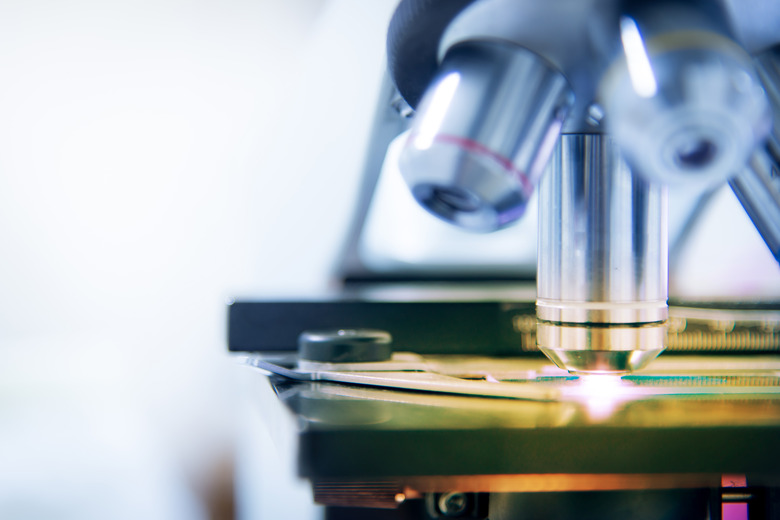What Is Cell Compartmentalization And Why Does It Occur?
Cells are the building blocks of life. Tiny as they may be, they have several jobs to do and contain several compartments in order to more efficiently perform the functions they must do to keep you alive. A basic knowledge of how and why cells compartmentalize can go a long way in understanding how cells work to keep plant and human life thriving on Earth.
TL;DR (Too Long; Didn't Read)
Cell compartmentalization refers to the way organelles in eukaryotic cells live and work in separate areas within the cell in order to perform their specific functions more efficiently.
Inner Cell Workings
Inner Cell Workings
When people imagine a cell, they often picture an amorphous blend of all the water, proteins, carbohydrates and lipids that make it up. But cells function more like your body than most people realize. Your body contains separate components that do different jobs. Your legs help you to walk, for instance, and your kidneys work to filter waste, so your cells are made up of separate compartments that perform different jobs.
Types of Cells
Types of Cells
There are two types of cells: eukaryotic cells and prokaryotic cells. Most organisms are eukaryotes made up of eukaryote cells. Eukaryotic cells contain a membrane-bound nucleus, as well as membrane-bound organelles that each perform different functions within the cell. Those organelles live within different compartments inside the cell, so they can work in the microenvironment that suits them best.
Prokaryotic cells are unicellular, meaning they lack a nucleus, mitochondria and organelles bound by membranes. Examples of prokaryotic cells include bacteria such as E. coli. While these types of cells do have internal structures and are capable of making compartmentalized areas, they tend to do one job and don't need to compartmentalize the way eukaryotic cells do.
Boosting Efficiency
Boosting Efficiency
Compartmentalization in eukaryotic cells is largely about efficiency. Separating the cell into different parts allows for the creation of specific microenvironments within a cell. That way, each organelle can have all the advantages it needs to perform to the best of its ability.
It's similar to the way that a home needs different environments in different rooms. You want a comfortable bed and curtains that block the sun in your bedroom, for instance, and you need appliances and food to be able to cook a meal in your kitchen. Outfitting each room of your house with all the resources necessary to perform every household duty would be a waste of time, money and space. Cells compartmentalize their resources in the same way your do in your home, allowing each part of the cell to flourish in its own tiny environment.
In addition, several functions can be going on at once, also in the same way they do in a home. While you might be using your quiet basement to study, another family member could be using the garage to fix a car while someone else naps in the bedroom, all without disrupting each other. Since so many cellular reactions have to simultaneously happen to keep plant and animal life alive, it would be a serious inefficiency if each of your cells could not perform several jobs at once.
Therefore, your eukaryotic cells have evolved to become super efficient spaces where multiple activities happen, allowing plant and animal life to thrive.
Cite This Article
MLA
Dragani, Rachelle. "What Is Cell Compartmentalization And Why Does It Occur?" sciencing.com, https://www.sciencing.com/cell-compartmentalization-occur-7472001/. 13 April 2018.
APA
Dragani, Rachelle. (2018, April 13). What Is Cell Compartmentalization And Why Does It Occur?. sciencing.com. Retrieved from https://www.sciencing.com/cell-compartmentalization-occur-7472001/
Chicago
Dragani, Rachelle. What Is Cell Compartmentalization And Why Does It Occur? last modified March 24, 2022. https://www.sciencing.com/cell-compartmentalization-occur-7472001/
